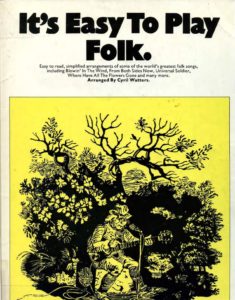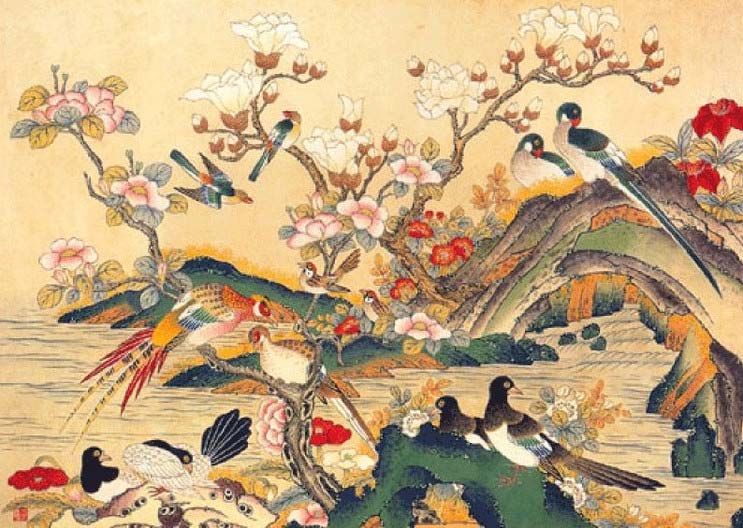Nanpa Hong 홍난파 – 고향의 봄 Spring in my Hometown 망할 음악 (Piano Solo sheet music)

Spring in My Hometown is a nursery rhyme written by Wonsoo Lee and composed by Nanpa Hong. It was made between 1927 and 1929 during the Japanese colonial period.
It can be called a nursery rhyme because it was written for children, but now it is a simple and beautiful song that is widely sung among adults beyond the boundaries of nursery rhymes.
The lyricist famous for children’s literature wrote this nursery rhyme when he was in middle school, when he was in his teens.
This song indirectly expresses the feelings of activists who left their homeland and fought for independence in Manchuria and Primorsky Krai, longing for Joseon before the rule of Gyeongsul during the Japanese colonial era. It can be said that it is a song that well expresses the feelings of intellectuals who want to protect the things of the Korean people even under colonial rule.
The lyrics of this song were originally written in 1925 by Won-soo Lee, depicting his hometown. The lyrics of this song were originally written by Won-soo Lee in 1925, depicting his hometown. Later, thanks to Jeong-hwan Bang won the 1926 edition of Children’s 35, a magazine that won the competition for poetry literature and literature. It was first composed by Il-rae Han, but was sung only in the Masan area, then was discovered by Hong Nan-pa and re-composed, and the public enjoyed singing it. After that, in 1999, the Spring Creative Children’s Song Festival of Hometown was held to commemorate it.
Lee Won-soo and Hong Nan-soo are both classified as pro-Japanese.
The so-called ‘pro-Japanese faction’ here refers to acts of rebellion against the Korean nation or work under the influence of Japanese imperialism in the period of certain Japanese imperialism, or -whether on the side of Japan or not – promoting the Japanese colonialism (Japan). It is a collective term for those who give or help the right to gain or benefit. The main reason for such ‘pro-Japanese’ behaviors is that doing so can give them several benefits, including security and financial gain.

Best Sheet Music download from our Library.
Browse in the Library:
Nanpa Hong 홍난파
Hong Nan-pa (April 10, 1897, or 1898 – August 30, 1941) was a Korean composer, violinist, conductor, music critic and educator.
He is best known as the composer of Bongseonhwa (봉선화, literally Garden Balsam) written in 1919.
It is generally considered as the first true Korean original song composed in Western style.
It was widely sung during the period. Hong also contributed to developing Korean culture during the period with his diverse cultural activities.
Hong Nan-pa was born at Hwalcho Village of Namyang Township in present Hwangseong County, Gyeonggi on April 10, 1897.
He was the second son to his father, Hong Sun (홍순) of the native Hong Clan to Namyoung (南陽) and his mother from Lee Clan of Jeonju, Jeolla. He had one brother and two sisters. Nan-pa is his ho, or pen name, but his given name is Hong Yeong-hu.
His family moved to Seoul when he was still a young child. As he lived near the Ewha Academy (이화학당) located in the neighborhood of Jeong-dong,[10] he attended Jeongdong Methodist Church and got access to hymn, a Western music.
He learned basic Confucian studies at a local seodang (a kind of elementary school) and entered a middle school in 1910 which was affiliated with the Hwangseong Young Men’s Christian Association (황성기독교청년회, Korean YMCA).
Since then, he had a violin and received music lessons. At the age of fifteen, Hong was admitted to the Western music department of Korean Court Music Study Institute (조선정악전습소 Joseon Jeongak Jeonseupso) that was the only music school in Korea at that time. He studied vocal music and violin from Kim In-sik (김인식). After the graduation, he was hired as an assistant teacher at the school.
In 1918, he went to Japan to enter Tokyo Music School in Ueno, but returned to Korea to participate in the March 1st Movement as temporarily absent from the school. One year after the movement, he went back to Japan.
However, Hong was rejected to continue his study at the school because of his involvement in the independent movement, so that he came back to Korea in despair. During his stay in Japan, he published the first Korean music magazine titled “Samgwang” (삼광, literally “Three Light”). After his return, he worked as a news report for Maeil Sinbunsa, and even attended Severance Medical School, which became later the medical department of Yonsei University.
In April 1920, Hong included the score of Aesu (애수, literally “sorrow”), a violin piece on the end pages of his short novel “Cheonyeohon” (lit. “a maiden’s soul). He asked Kim Hyeong-jun for lyric for the tune, whose song is “Bongseonhwa” (봉선화). In 1922, Hong made efforts to promote music while he participated in Yeongakhoe (연악회, Music Research Society) established by Gyeongsang Akuhoe (경상악우회 Gyeongsang Music Friend Society)’s lead.
In 1925, he had the first solo violin recital as a Korean and published “Eumakgye” (음악계, Music World), the first music magazine published in Korea. Hong also wrote Eumakmanpil (음악만필, Music Essay) in Changjo.
In 1926, as Hong entered Kunitachi College of Music as a transfer student, he was accepted to play first violin at Tokyo Symphony Orchestra (current NHK Symphony Orchestra). After graduation in 1929, he returned to Korea and published the first volume of “100 pieces of Joseon Children’s song” (조선동요 100곡집) through Yeongakhoe.
